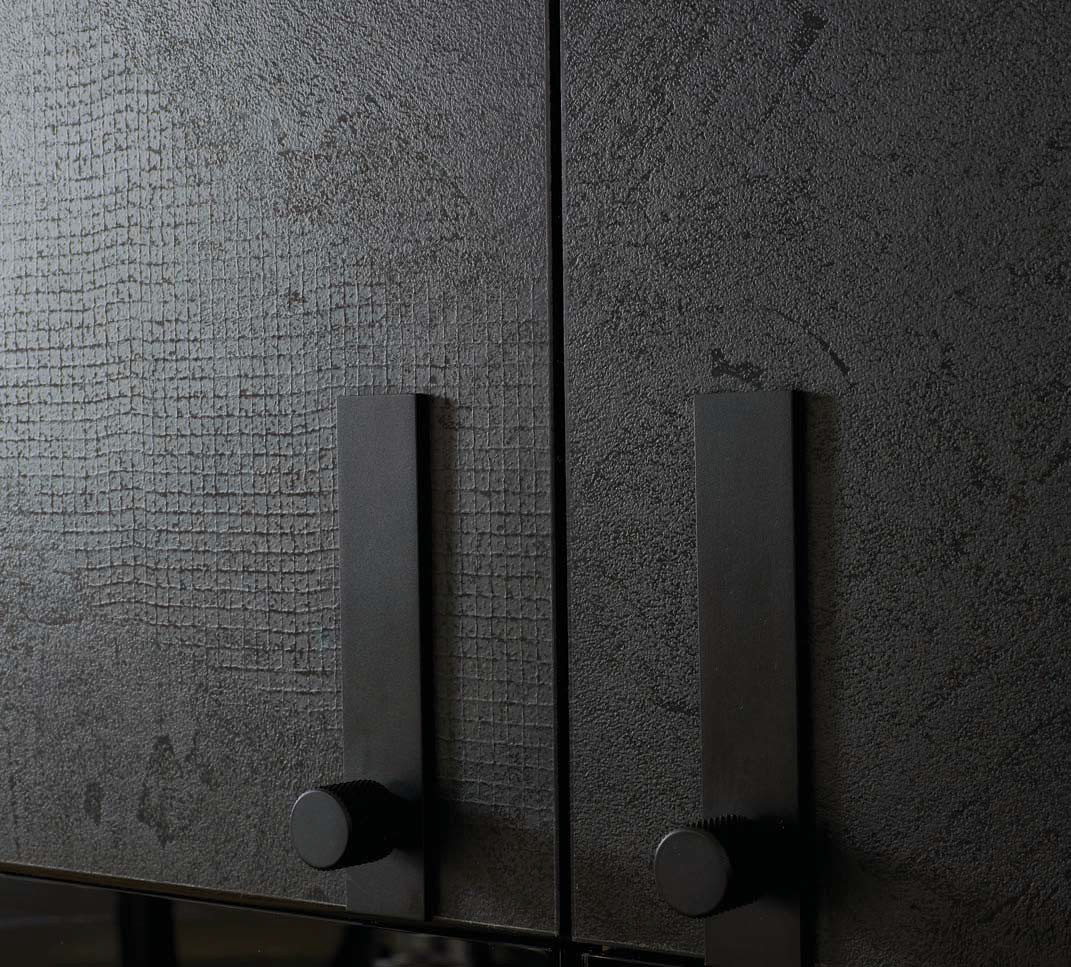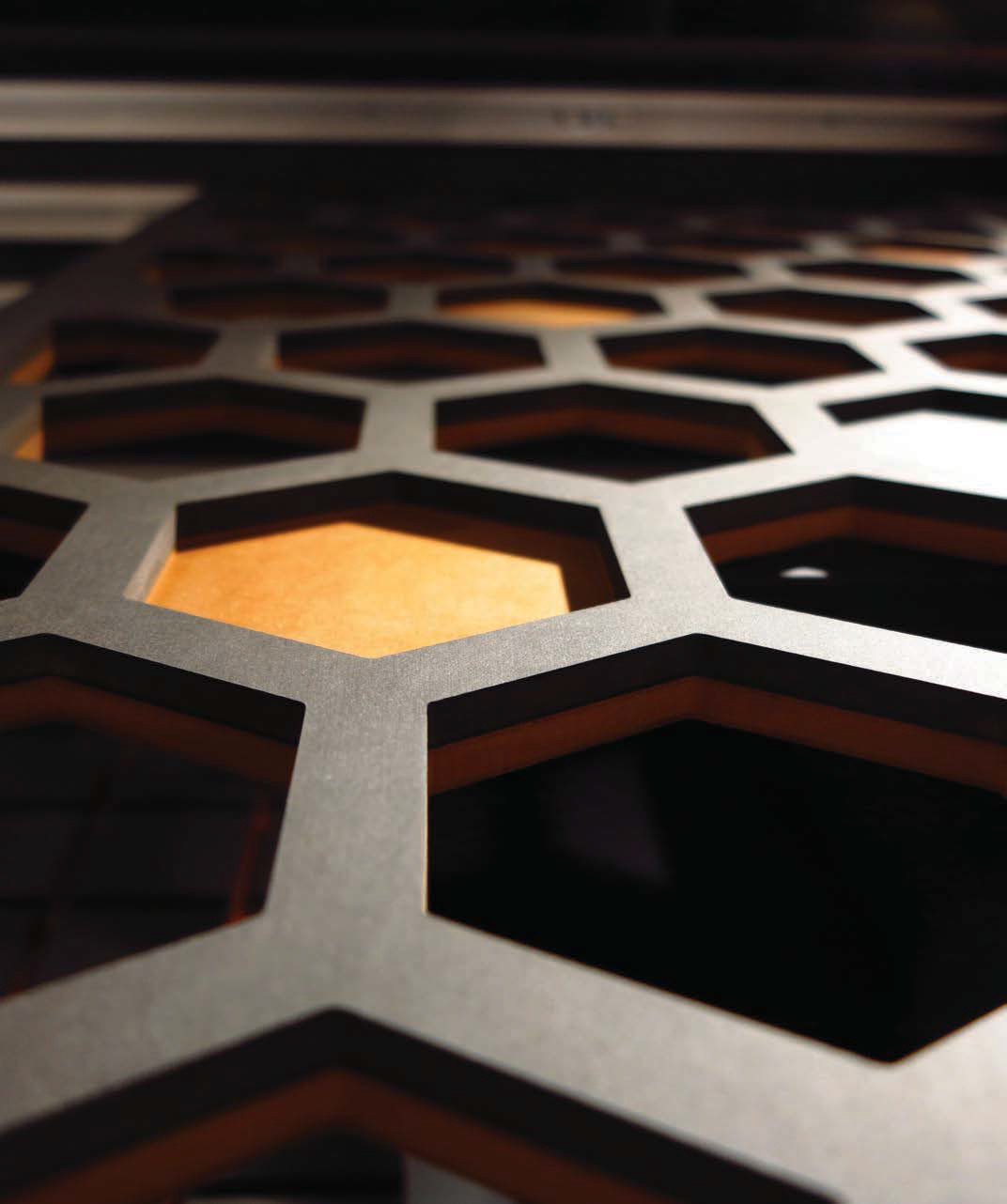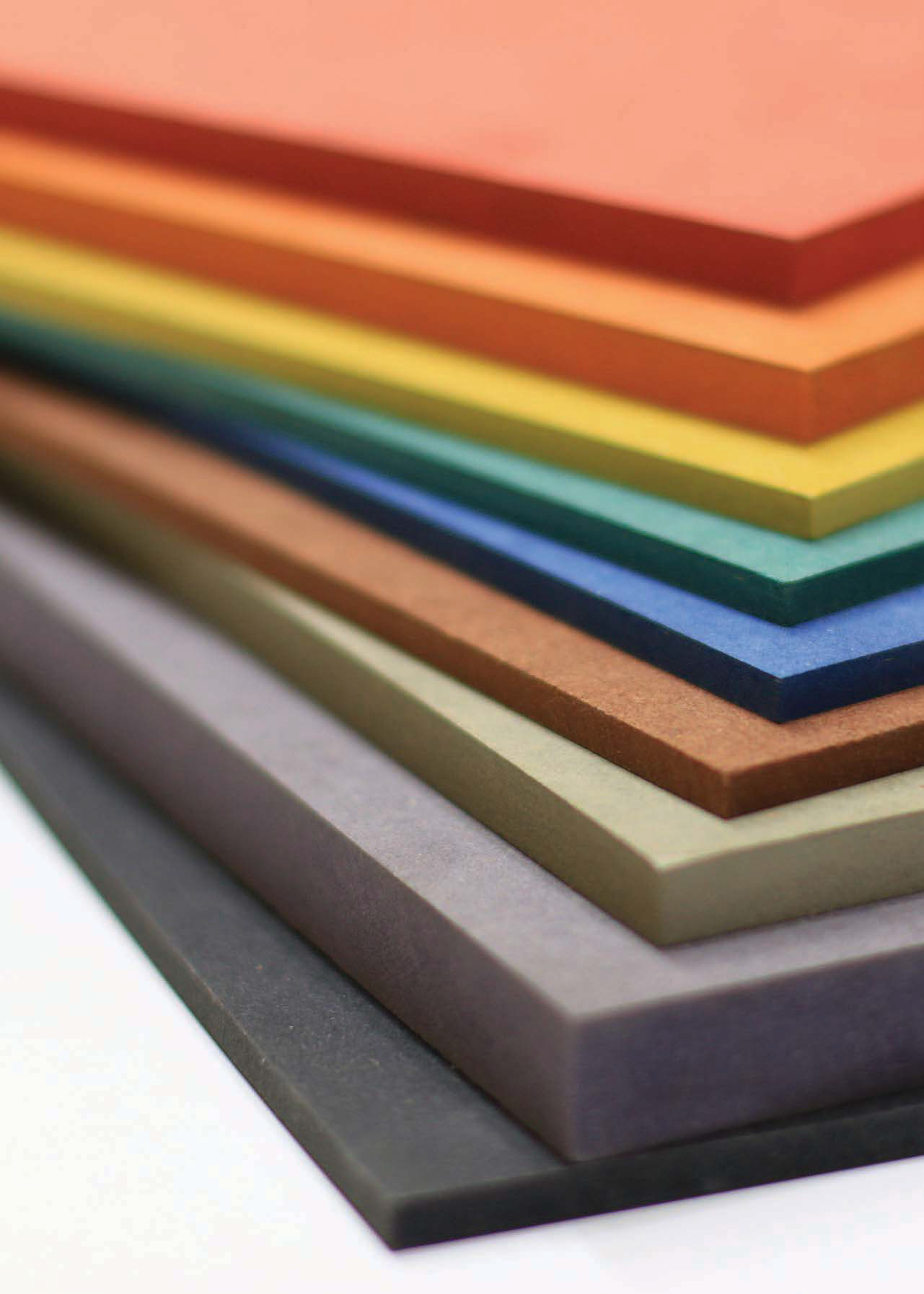Surface currents
8 February 2019Dave Huggins, business development director at International Decorative Services (IDS), in the UK, talks about trends in panels
It will come as no surprise that surface textures continue to be a key area of focus for the panel sector. Across residential and commercial interiors, the trend is to layer up different colours, materials and surface textures inspired by nature and it’s this that is driving manufacturers in their product development programmes.
Design-wise, we are seeing dark and light woodgrains mixed with sophisticated marbles, natural stone and metallics and these contrasting, yet harmonious, elements create styles that range from industrial to luxurious.
Swiss Krono, for example, has recently launched its CamuStyleTX range featuring a brand new texture best described as a cross between natural stone and fabric. The interplay of two textural elements in one surface structure is something completely different for the sector and elevates the 12 plain colours and pearlescent designs to a very different design level. It’s available with an MFC, MDF or CDF core in different sizes and thicknesses, with matching edging tape, and we think it will appeal to furniture manufacturers and designers for furniture, wall panelling, table tops, shelving, door frontals and worktops, because it harnesses the key trends for matt surfaces and an organic palette, combined with a hint of industrial styling.
The trend colour of the moment is black, evident at kitchen and furniture exhibitions in Germany and Italy over the last couple of years. Bold and sophisticated at the same time, it’s the sort of colour to use as an accent element in contrast with other colours.
Grey still remains highly popular across all furniture manufacturing sectors, but the move seems to be away from the colder, concrete shades in favour of warmer greys now, with a hint of black as a base tone.
There’s still a huge market for highgloss texture on kitchen doors but matt texture on plain colours and woodgrains continues to grow in popularity.
I have particularly noticed a trend towards slab MFC doors versus PVC wrapped and Shaker doors, which I believe is due to the realism in the print and synchronised surfaces. When using the right decorative pattern and surface, slab doors offer a sensory experience that can’t be replicated by a PVC foil-wrapped door. Synchronised and embossed doors are also much easier to produce and harder wearing in the long term.
Kitchen work surfaces
The matt trend is also creeping more into the worktop sector, with brands such as Bushboard and Formica both having ultramatt surfaces in their portfolio. One of the most exciting new product developments, though, has got to be the Fenix NTM material, a super-matt surface that does not show fingerprints, is ultra-hygienic, highly resistant to solvents and can heal micro scratches simply by rubbing with a sponge or applying gentle heat. This is all possible through pioneering technology which uses acrylic resins mixed with nanotech particles and colour pigment that is electron beam cured at high speed to create its sealed, smooth, matt surface and thermal healing capability. It will cope with anything a kitchen can throw at it and still look superb.
And thin is where the trend is in work surfaces, down to 12.5, 16, 18 or 20mm. Laminate, with its innate ability to keep reinventing itself to be versatile and fashionable, is responding to this trend with ultra-slim 12.5mm solid core work surfaces, such as the new Bushboard Evolve range. There’s a selection of 15 stylish designs, with five solid core colours achieving a slick, square-edged detail that’s on-point for contemporary kitchen design.
A key benefit is that it’s very easy to install on site by a kitchen fitter and achieves the look of more expensive materials, such as composites and stones, but without the need for templating and off-site fabrication.
Solid colour
A newcomer to the UK market is FORESCOLOR, a coloured-throughout wood fibreboard, which combines the design flexibility of wood with the brightness of colour. The product is an evolution of MDF, offering the additional benefits of moisture resistance, nontoxicity and tool friendliness for a multitude of applications in the domestic, hospitality, retail, commercial, education and public sectors, for furniture, decorative and acoustic panels, shelving, cladding, doors and signage.
Maintaining its consistent colour, it offers superior machining capabilities, allowing boards to be laser-cut into intricate designs, or routered to include text or logos, with a precision finish. Due to its high density profile, and the high melamine content of the resin used, there is little or no sanding required after machining.
No added formaldehyde
As well as continuing innovation in the look and feel of decorative panels, what’s in their make-up is becoming important, specifically that they have no formaldehyde added.
Again, Swiss Krono is at the forefront of innovation here and launching a brand new panel product with the acronym of NAF, meaning ‘no-added formaldehyde’.
We are about to trial the product with some UK customers to demonstrate that its machinability is no different to the standard virgin core E1 FSC MFC certified product they have become widely accustomed to. We’ve selected the new NAF 18mm K101 PE/PE 2800mm x 2070mm MFC for trialling purposes, as this is commonly used to manufacture furniture carcasses.
Swiss Krono sees NAF as a major product stream for them going forward, with potential in many markets, particularly in the public sector for education, health care and in student accommodation.
I think we will see a natural move to this type of core board, particularly for UK manufacturers which export to countries and regions that have a minimum requirement of NAF decorative furniture.
The availability of panels with no added formaldehyde inevitably raises those ethical versus commercial questions.
If these boards are better for our health and our environment, then surely they should be used more widely. But, are customers willing to pay for a more expensive core board? I think we can look to our experiences with FSC and PEFC products on that one.



